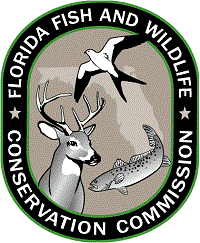Changes Would Improve Deer Management in Northwest Florida’s Zone D

Following months of meetings and evaluations of public preferences, the Florida Fish and Wildlife Conservation Commission (FWC) has formulated possible changes to deer hunting in northwest Florida for the 2014-15 hunting season. The changes are intended to improve hunter satisfaction.
Under the proposed changes in Florida Zone D, in northwest Florida, the FWC is looking at antler-point regulations in Deer Management Unit (DMU) D-1 that would require that antlered deer have at least one antler with two or more antler points on one side to be eligible for harvest. DMU D-1 is south of Interstate 10. In DMU D-2, which is north of Interstate 10, antlered deer would need at least one antler with three or more points on one side to be eligible for harvest.
Hunters under the age of 16 would be exempt from the proposed antler-point regulations on private lands and on some wildlife management areas.
Zone D stretches from Tallahassee west to the Florida-Alabama state line.
“The purpose of the antler-point regulations, both in DMU D-1 and DMU D-2, is to protect the majority of 1.5-year-old bucks from harvest while allowing the harvest of 2.5-year-old and older bucks,” said James Kelly, Assistant Deer Management Program Coordinator. “During our outreach efforts, we heard a lot of support for increasing the number of bucks in the population, improving buck-to-doe ratios and increasing the size of bucks harvested.”
Other changes under consideration are to shift the antlerless deer season on private lands in DMU D-1 from the current seven consecutive days to four weekend days during the general gun season. In DMU D-2, antlerless deer days would increase to eight weekend days. Three weekends would occur during general gun season, and one weekend would occur during the muzzleloading gun season.
“The proposed change in antlerless deer days in DMU D-1 is to fulfill the stakeholders’ goal of maintaining or increasing the deer population while also increasing the flexibility of antlerless deer days during general gun season,” Kelly said. “Deer-herd density and productivity is higher in DMU D-2, which is why we are recommending more antlerless deer days for this unit.”
Kelly said the regulation proposals are based on detailed input from hunters, landowners, farmers and others during a series of public meetings, public webinars, surveys and technical assistance group meetings.
The proposed changes are recommendations by FWC staff and have not yet been presented to Commissioners for consideration and action. More detailed information and the opportunity to provide feedback on both proposals can be made at MyFWC.com/Deer.

